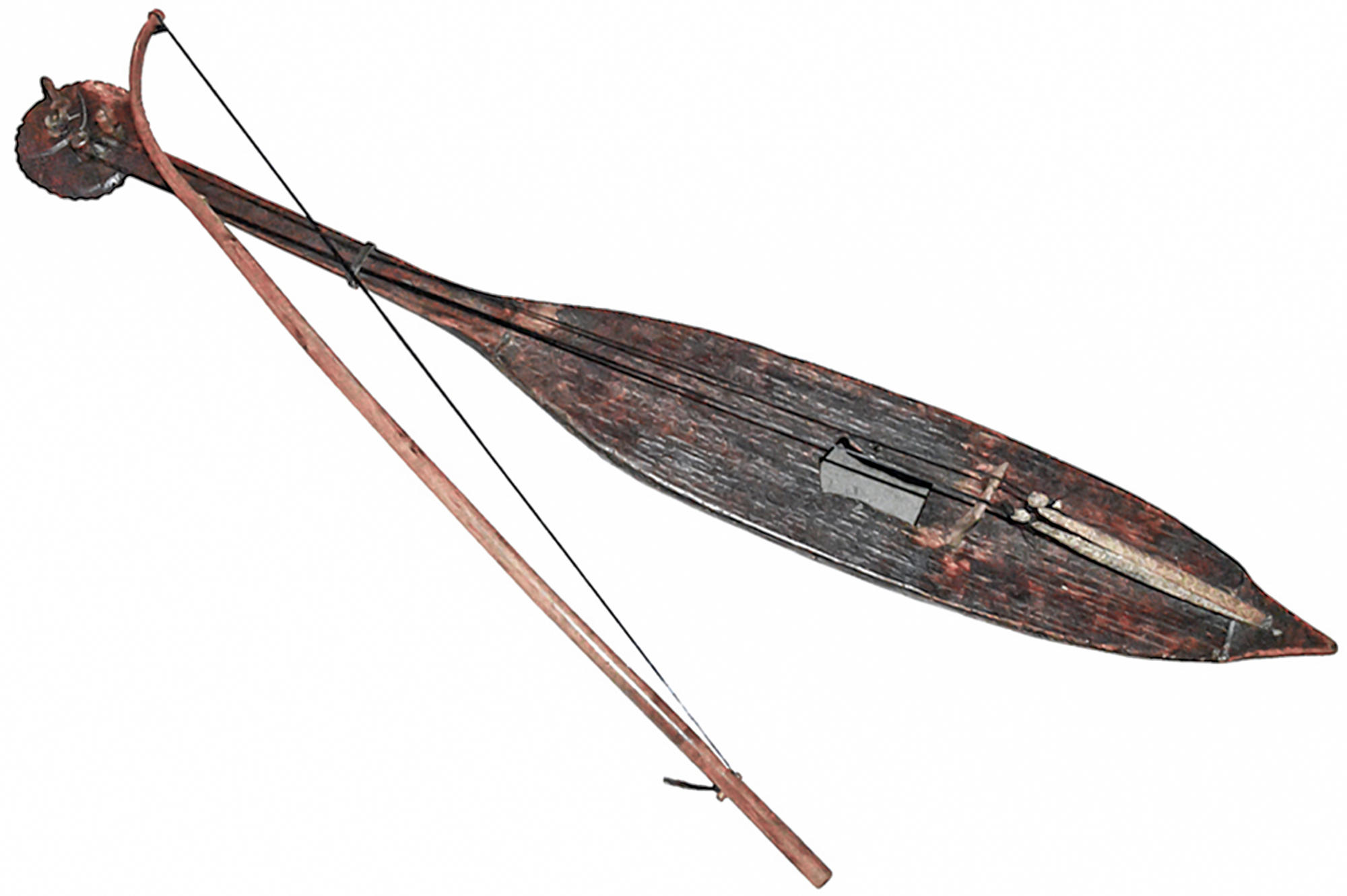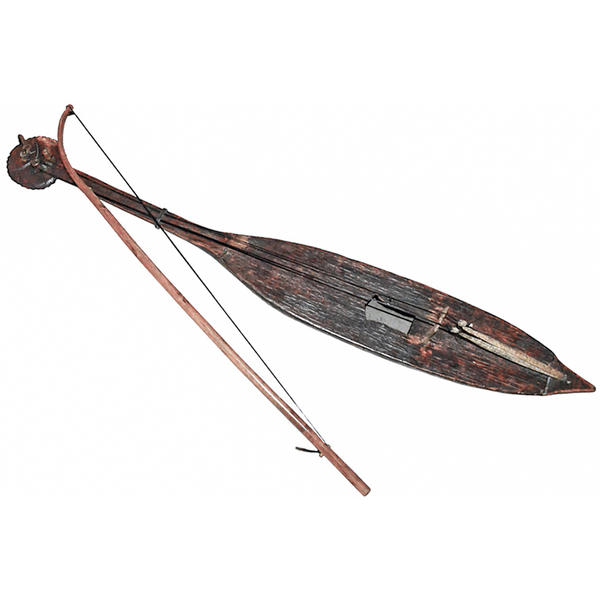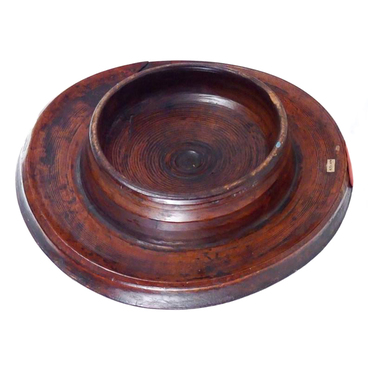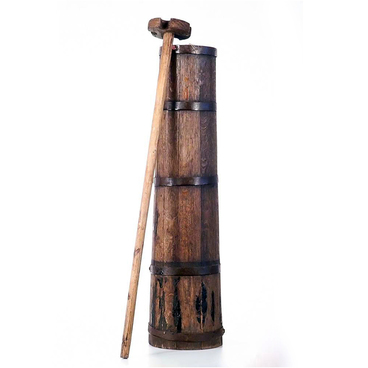The shichepshin is an ancient stringed instrument, one of the most popular and common in Adygea. It was played with a bow which was passed over the strings made from horse-hair. For that reason, the shichepshin is often called the Circassian violin.
The traditional shichepshins had the shape of a boat or a dagger, with a convex bottom and two or three strings. Its body was made from hard wood (ash-tree, maple, pear, or nutwood). The upper soundboard of the instrument was traditionally made from fir or silver-fir wood lath, and later, from plywood. At the center of the upper soundboard, a sound hole was made. It could be of different shapes: round, diamond or even fancy-shaped. Sometimes, additional holes were made at the top and at the bottom of the instrument.
The shichepshin was usually tuned to fifths, sometimes to fourths. Its range was about two octaves, and the tune was mostly played on the string with a higher pitch. The instrument was held vertically, with the lower part leaning against the knee. The bow never moved, it was the shichepshin itself that was turned towards it.
On the whole, the design of the instrument was quite simple. To make it, one needed ordinary carpenter tools that almost any Adygei man had, so not only a good carpenter, but the musician himself was able to make it.
A person who could play the shichepshin usually became a singer storyteller. No major festivity could be held without the Circassian violin. Music also inspired Adygei warriors to heroic deeds.
Circassians believed that the shichepshin could predict bad weather. This belief has a scientific description: due to the high humidity of the air, the Circassian violin sounded worse.
Shichepshins can be found in Adygea even today. There are still some artisans that keep and transmit the secrets of creation of the musical instrument, as well as musicians that still play it.
The traditional shichepshins had the shape of a boat or a dagger, with a convex bottom and two or three strings. Its body was made from hard wood (ash-tree, maple, pear, or nutwood). The upper soundboard of the instrument was traditionally made from fir or silver-fir wood lath, and later, from plywood. At the center of the upper soundboard, a sound hole was made. It could be of different shapes: round, diamond or even fancy-shaped. Sometimes, additional holes were made at the top and at the bottom of the instrument.
The shichepshin was usually tuned to fifths, sometimes to fourths. Its range was about two octaves, and the tune was mostly played on the string with a higher pitch. The instrument was held vertically, with the lower part leaning against the knee. The bow never moved, it was the shichepshin itself that was turned towards it.
On the whole, the design of the instrument was quite simple. To make it, one needed ordinary carpenter tools that almost any Adygei man had, so not only a good carpenter, but the musician himself was able to make it.
A person who could play the shichepshin usually became a singer storyteller. No major festivity could be held without the Circassian violin. Music also inspired Adygei warriors to heroic deeds.
Circassians often played the shichepshin at the bed of severely ill people because they thought that music had the power of healing. In the Adygei folklore, there are many stories about how even the dead were brought back to life by the sound of that musical instrument.Circassians often played the shichepshin at the bed of severely ill people because they thought that music had the power of healing. In the Adygei folklore, there are many stories about how even the dead were brought back to life by the sound of that musical instrument.
Circassians believed that the shichepshin could predict bad weather. This belief has a scientific description: due to the high humidity of the air, the Circassian violin sounded worse.
Shichepshins can be found in Adygea even today. There are still some artisans that keep and transmit the secrets of creation of the musical instrument, as well as musicians that still play it.
Circassians believed that the shichepshin could predict bad weather. This belief has a scientific description: due to the high humidity of the air, the Circassian violin sounded worse.
Shichepshins can be found in Adygea even today. There are still some artisans that keep and transmit the secrets of creation of the musical instrument, as well as musicians that still play it.



